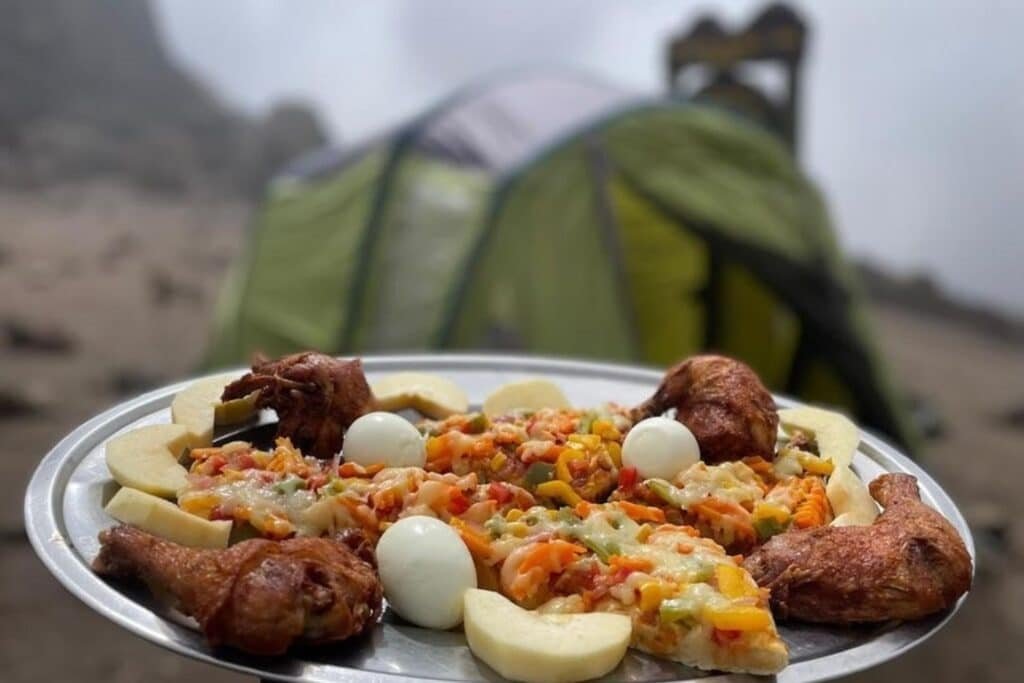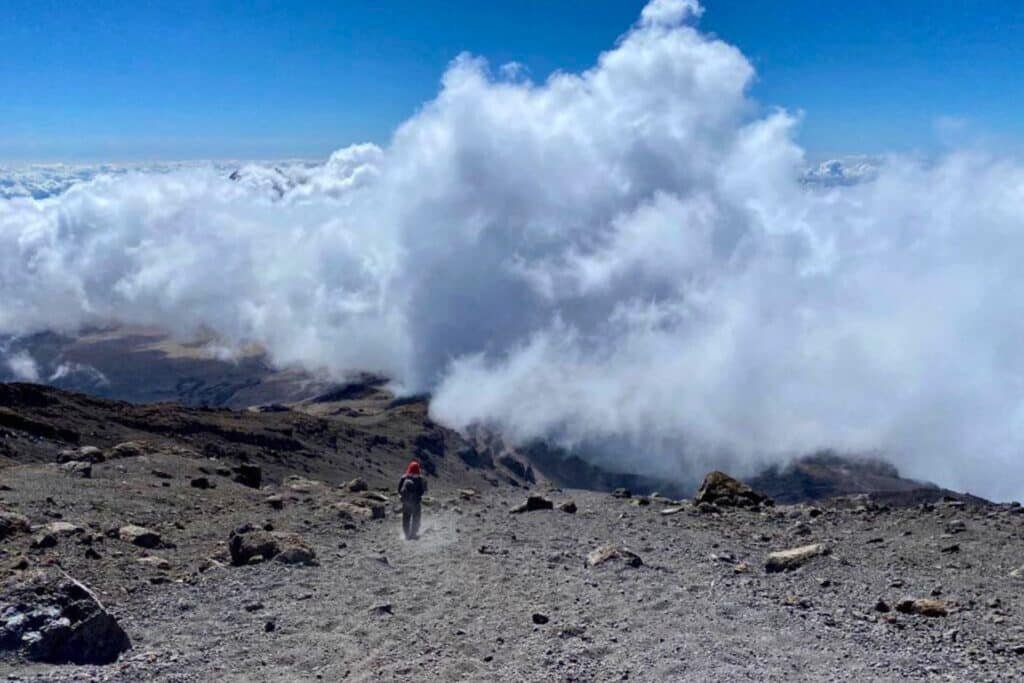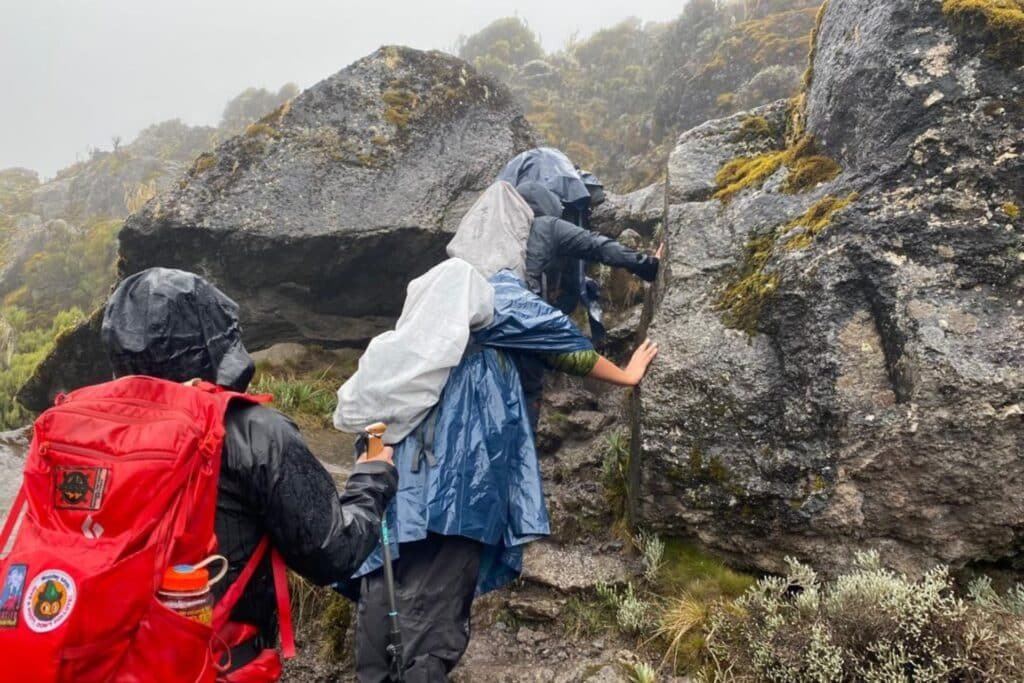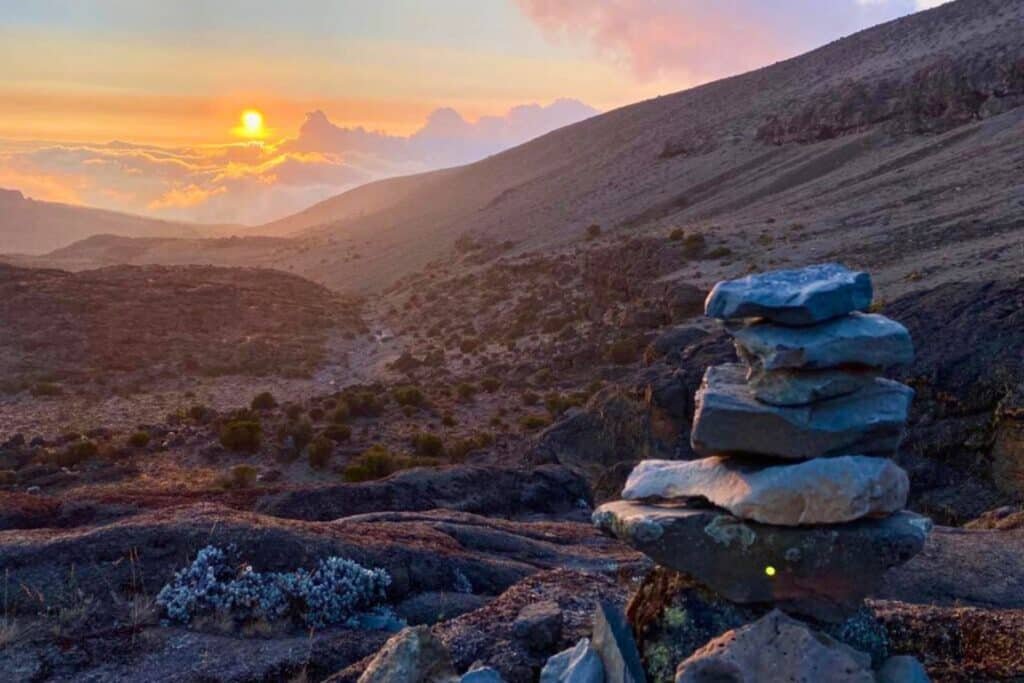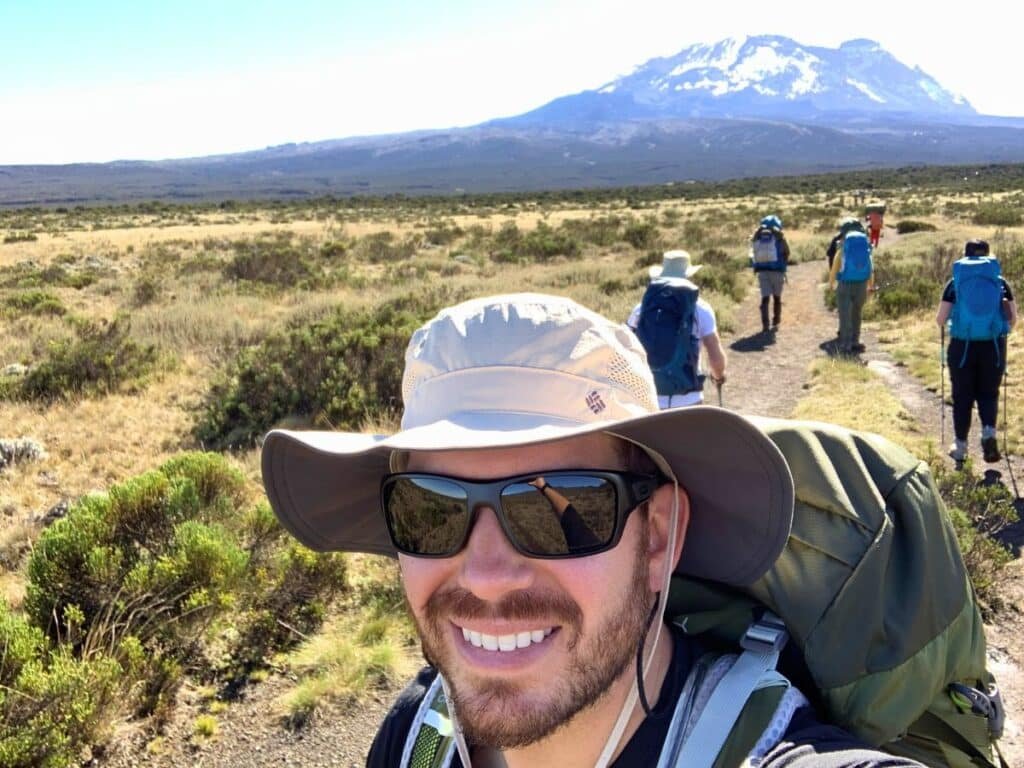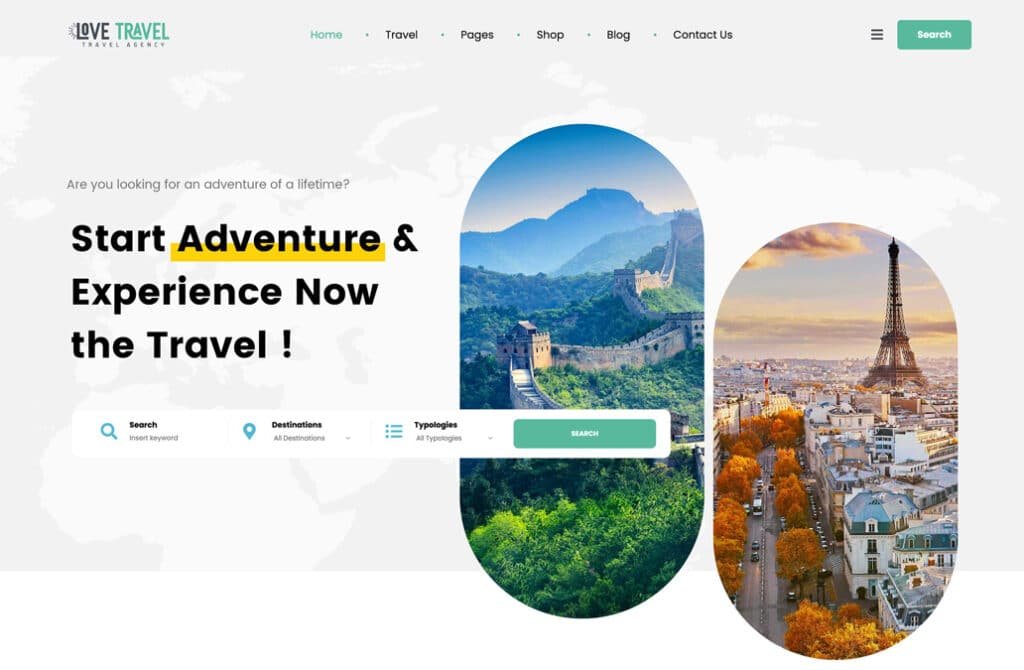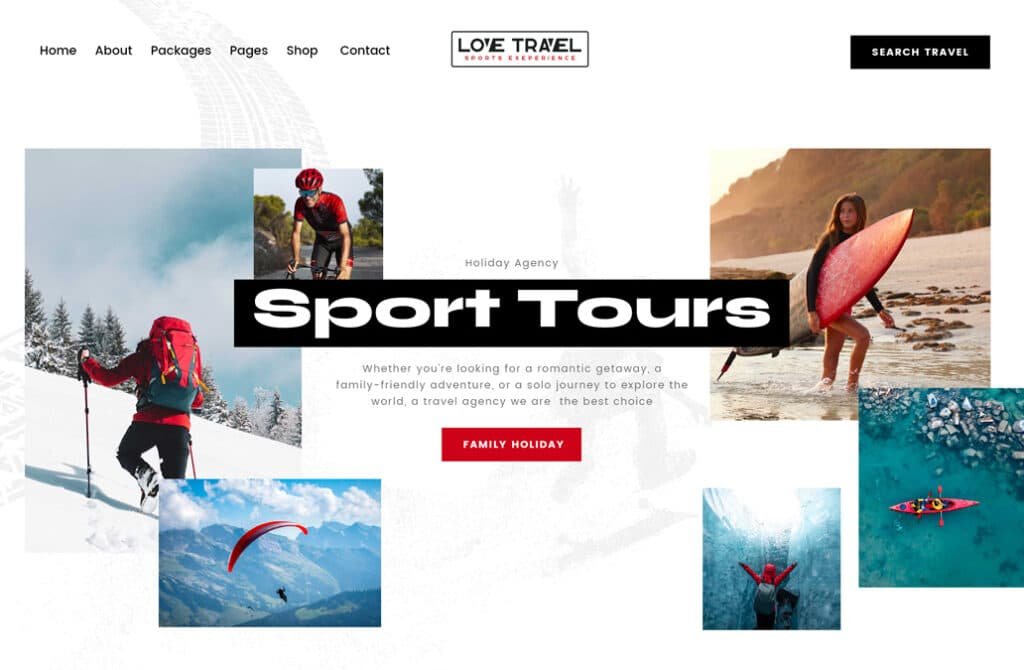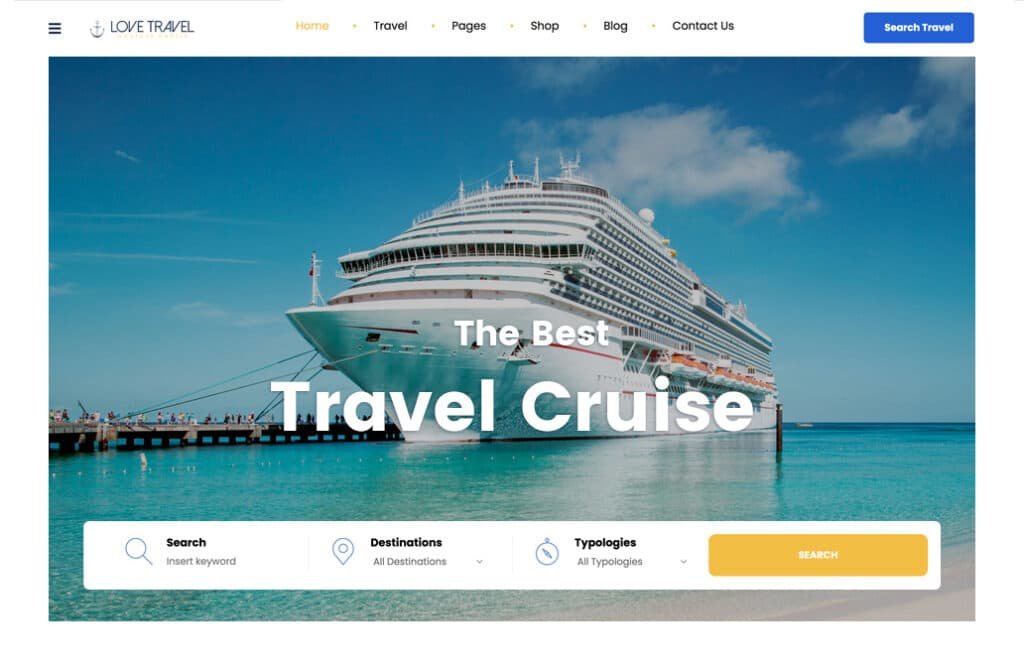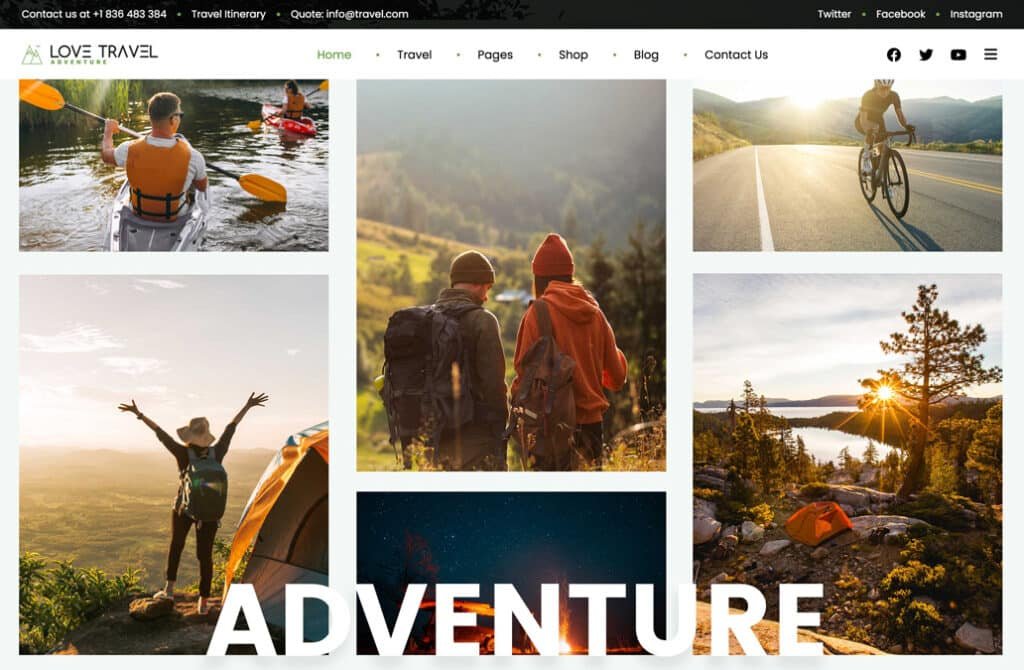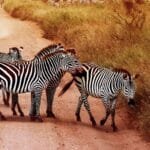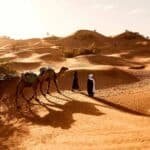At high altitudes, your body undergoes significant stress due to lower oxygen levels and increased physical exertion. This environment elevates your metabolism, leading to higher calorie requirements. Consuming a balanced diet rich in carbohydrates, proteins, and fats is essential to meet these increased energy demands and to support overall health during the ascent.
Carbohydrates for Endurance
Carbohydrates are the primary fuel source for your body, and they become even more essential at high altitude. Compared to fats and proteins, carbs require less oxygen to metabolize, making them the most efficient energy source for prolonged physical activity.
✔ Why carbs matter on Kilimanjaro: They provide a steady supply of glucose to maintain stamina, reduce fatigue, and support brain function in low-oxygen conditions.
✔ Best sources of carbs on the trek: Bread, pasta, rice, potatoes, oatmeal, fruits, and energy bars.
✔ How they’re served: Expect high-carb meals at every stop, ensuring your muscles get the fuel they need.
Proteins for Recovery
Your muscles work overtime on Kilimanjaro, and protein is essential for muscle repair and recovery after long days of trekking. Without enough protein, muscle fatigue and breakdown can set in faster, making the climb more challenging.
✔ Why protein matters at altitude: Supports muscle repair, acclimatization, and immune function to keep you strong.
✔ Best sources of protein on Kilimanjaro: Lean meats (chicken, beef, fish), eggs, lentils, beans, nuts, and dairy products.
✔ How they’re served: Every meal includes protein-rich options to aid in post-hike recovery and reduce muscle soreness.
Fats for Sustained Energy
While carbs fuel short-term exertion, fats provide long-lasting energy; essential for trekking multiple hours a day at high altitude. However, not all fats are created equal. Focus on healthy fats that provide slow-burning fuel without slowing digestion.
✔ Why fats matter on Kilimanjaro: They deliver twice the energy per gram compared to carbs and proteins, making them ideal for long trekking days.
✔ Best sources of healthy fats: Nuts, seeds, avocados, olive oil, peanut butter, and fatty fish.
✔ How they’re served: Nuts and seeds are included in snacks, and healthy oils are used in meal preparation.
Avoid heavy, greasy foods that can be hard to digest at altitude. Stick to lighter, nutrient-dense fats for sustained energy.
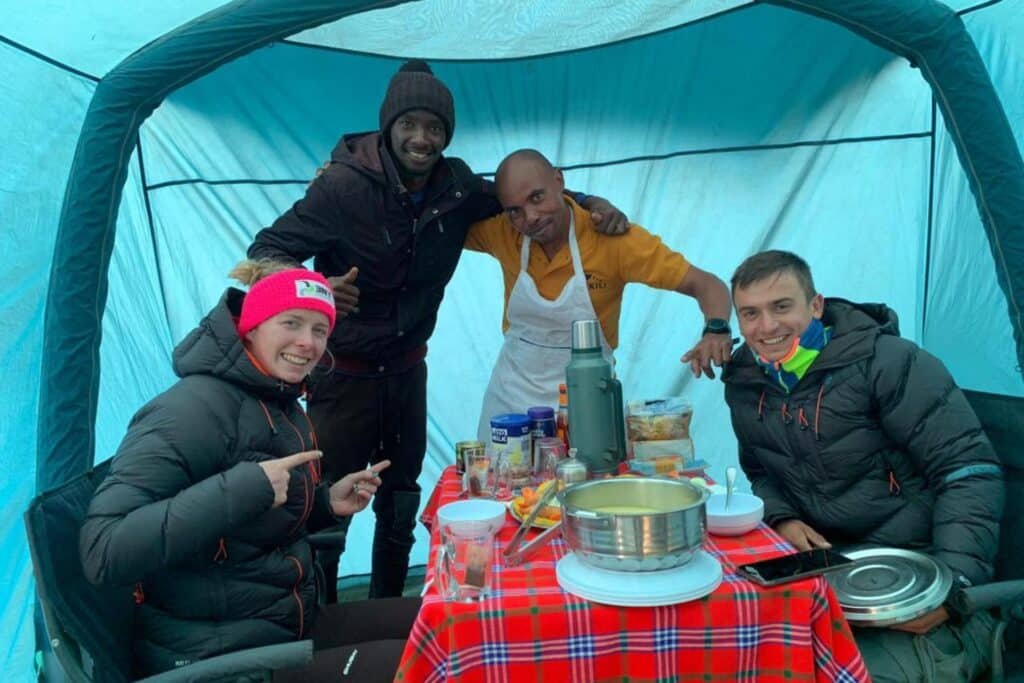
Hydration and Nutrition at High Altitude
At high altitudes, dehydration sets in faster than at sea level due to cold, dry air and increased exertion. Staying properly hydrated is just as critical as eating the right foods. Hydration helps prevent altitude sickness, improves circulation, and boosts performance.
Effects of Dehydration on Altitude Performance
Even mild dehydration can lead to:
❌ Fatigue & dizziness, making every step harder.
❌ Increased risk of altitude sickness, worsening headaches and nausea.
❌ Slower muscle recovery, causing more soreness and weakness.
❌ Cognitive impairment, reducing focus and coordination.
Dehydration symptoms mimic altitude sickness! Drink water before you feel thirsty to stay ahead of the curve.
How Much Water Should You Drink Daily on Kilimanjaro?
✔ 4 to 5 liters per day is recommended to compensate for fluid loss through sweat and respiration.
✔ Use a hydration bladder (CamelBak) for easy sipping while hiking.
✔ Drink water frequently—small sips throughout the day are better than chugging large amounts at once.
Your urine should be pale yellow—dark urine is a sign you’re dehydrated and need to drink more!
Electrolytes: Why They Matter & Best Sources for Hydration
Electrolytes like sodium, potassium, and magnesium are essential for:
✔ Maintaining fluid balance and preventing dehydration.
✔ Reducing muscle cramps and fatigue during long treks.
✔ Helping your body retain water and improve circulation.
Best Sources of Electrolytes on Kilimanjaro:
✅ Electrolyte tablets or powders (add them to your water).
✅ Coconut water & sports drinks (for potassium & sodium).
✅ Fruits like bananas & oranges (natural electrolyte sources).
🔍 Kili Facts to Impress Your Friends
The Chagga people, who live around the base of Kilimanjaro, have a unique banana beer called “Mbege,” traditionally brewed using fermented bananas and millet.
What Kind of Food is Served on Kilimanjaro?
Breakfast
Mornings on Kilimanjaro start early, and a strong breakfast is essential to power you through the first stretch of your trek. Expect warm, filling, and high-energy options to prepare your body for long hours on the trail.
✔ Porridge – A great source of slow-releasing carbs for steady energy.
✔ Eggs (boiled or fried) – Packed with protein for muscle recovery.
✔ Sausages or bacon – A hearty protein boost to keep you full longer.
✔ Toast with spreads – Jam, honey, or peanut butter for quick energy.
✔ Hot Beverages – Tea, coffee, and hot chocolate to warm up in the crisp morning air.
Lunch
Lunch varies depending on your itinerary. Sometimes it’s a packed lunch eaten on the trail, while other times, it’s a sit-down meal at camp.
✔ Sandwiches with chicken, cheese, or peanut butter for energy.
✔ Boiled eggs for protein and long-lasting satiety.
✔ Fresh fruit (bananas, oranges, apples) for natural sugars and vitamins.
✔ Cold drinks and hydration supplements to replenish electrolytes.
Dinner
Dinner is the biggest and most comforting meal of the day, giving your body the nutrition it needs to recover before the next morning. Meals are warm, hearty, and packed with proteins, healthy fats, and carbohydrates.
✔ Soup to start – Hydrating and packed with nutrients (vegetable, pumpkin, tomato).
✔ Main courses include:
- Chicken, beef, or lentils for protein.
- Rice, pasta, or potatoes for carbohydrates.
- Vegetable sauces, beans, or cabbage for fiber and vitamins
- Fresh fruit for dessert – A refreshing and nutritious end to your meal.
Best Snacks for Kilimanjaro Climbers
Between meals, snacking is crucial to keep your energy levels steady; especially on summit day, when your body burns calories faster than you can replace them.
✔ Energy bars – Quick, easy, and packed with protein and carbs.
✔ Trail mix – Nuts, seeds, and dried fruits provide healthy fats and natural sugars.
✔ Nut butter packs – Portable and full of calorie-dense fuel.
✔ Jerky – A protein-rich snack that helps with muscle recovery.
✔ Electrolyte powders or tablets – Helps replenish minerals lost through sweat.
What NOT to Bring (Foods That Don’t Work Well at Altitude)
❌ Chocolate bars that melt in the heat.
❌ Highly processed junk food that won’t sustain you.
❌ Overly salty snacks that contribute to dehydration.
Tip: Pack snacks that are high in calories, lightweight, and easy to eat on the go!
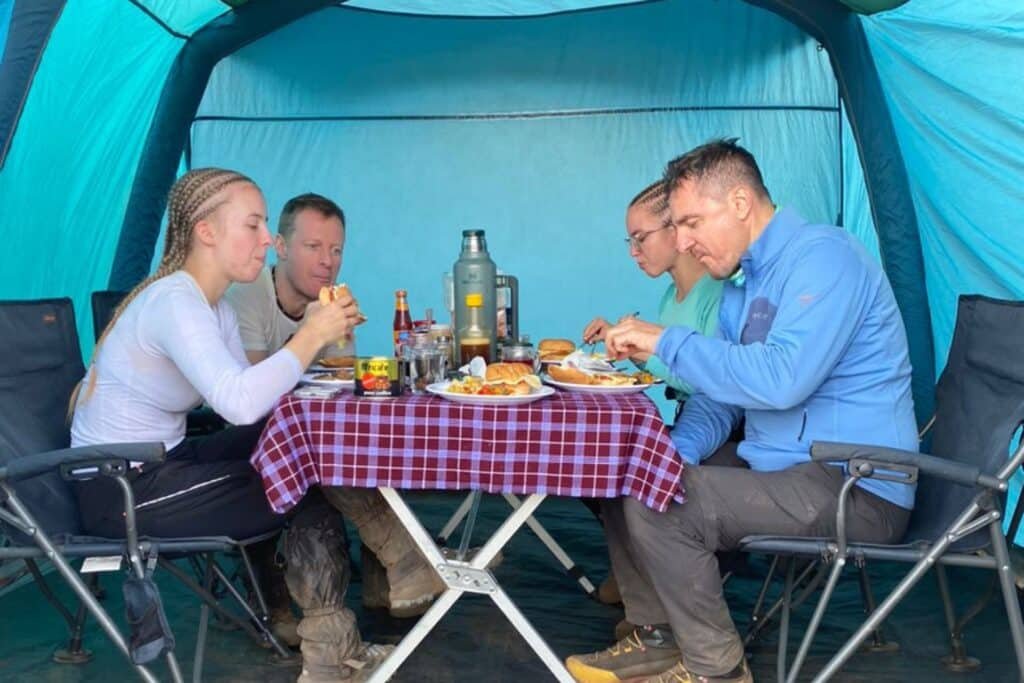
Special Dietary Options
Not all climbers eat the same, and at GO2KILI, we ensure that every trekker gets nutritious, delicious meals; regardless of dietary preferences or restrictions. Whether you’re vegetarian, vegan, gluten-free, or have specific allergies, our chefs craft energy-packed meals that meet your needs while fueling your climb.
Here’s how we accommodate special diets on Kilimanjaro and what’s on the menu for plant-based or allergy-conscious trekkers.
Vegetarian & Vegan Food on Kilimanjaro
Following a vegetarian or vegan diet at high altitude is completely doable with the right planning. We prepare plant-based meals that are rich in protein, fiber, and healthy fats, ensuring you get the fuel needed for long trekking days.
What’s on the Menu?
✔ Breakfast: Oatmeal with nuts and dried fruit, whole-grain toast with peanut butter, fresh fruit, and herbal tea.
✔ Lunch & Dinner: Lentil or chickpea stews, vegetable stir-fry with rice, pasta with tomato-based sauce, quinoa with roasted vegetables, and peanut sauce for added protein.
✔ Snacks: Trail mix, nut butter packs, dried fruit, and roasted chickpeas for an energy boost.
Gluten-Free & Allergy-Friendly Meal Options
For those with gluten sensitivities, celiac disease, or food allergies, GO2KILI offers a range of gluten-free and allergen-conscious options. We take dietary restrictions seriously and ensure that meals are prepared safely to avoid cross-contamination.
Gluten-Free Options on Kilimanjaro:
✔ Breakfast: Gluten-free pancakes, porridge, fresh fruit, and eggs.
✔ Lunch & Dinner: Rice, potatoes, gluten-free pasta, grilled meats, and vegetable-based stews.
✔ Snacks: Gluten-free energy bars, roasted nuts, and dried fruit.
Communicate Dietary Needs Early
To make sure we have everything ready for your trek, please inform us of any dietary restrictions or allergies at the time of booking. This allows our team to plan your meals properly and ensure you get the nutrition needed to reach the summit feeling strong and energized.
✔ Vegetarian, vegan, gluten-free, and allergy-friendly meals available upon request.
✔ Our chefs are trained to handle special dietary needs and prevent cross-contamination.
✔ Every meal is designed to meet your energy demands while being flavorful and satisfying.
Final Thoughts: Fueling Your Kilimanjaro Climb for Success
✔️ Proper nutrition is key to endurance, recovery, and altitude performance.
✔️ Meals on Kilimanjaro are designed for energy, warmth, and replenishment.
✔️ Special dietary needs? Just let us know in advance, and we’ll take care of it.
✔️ Bring your own high-energy snacks for extra fuel between meals.
✔️ Hydration is critical. Drink enough water and supplement with electrolytes!
At GO2KILI, we make sure every meal the right food to fuel for your adventure. Whether it’s a hearty breakfast before a climb or a warm dinner under the stars, we ensure that nutrition never becomes a challenge on your trek.

